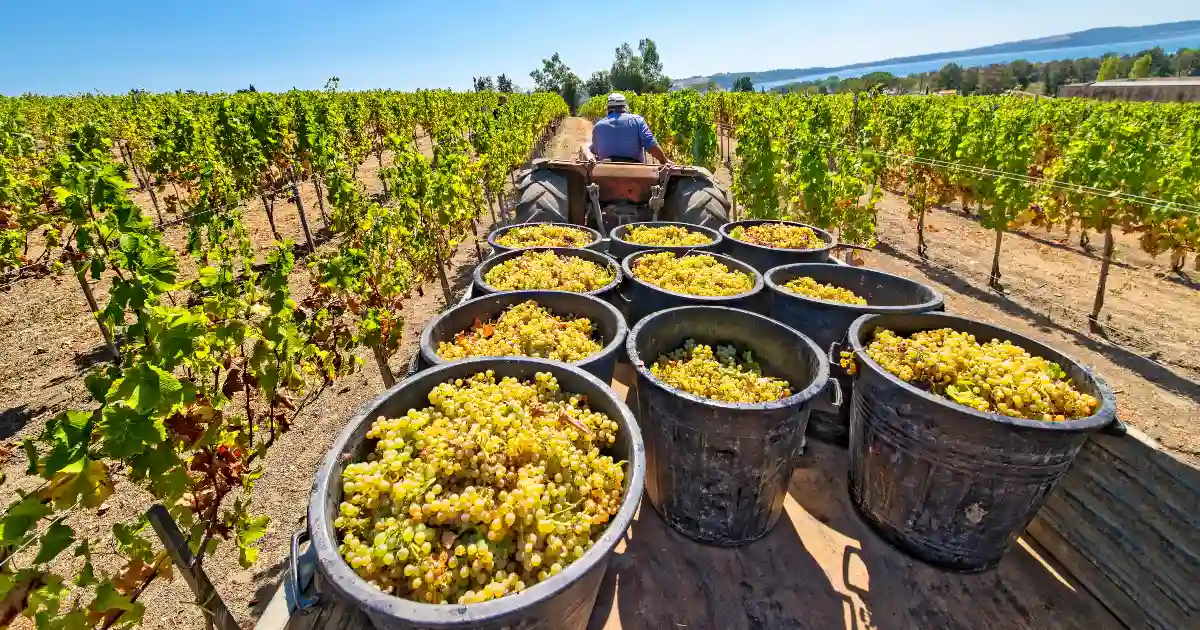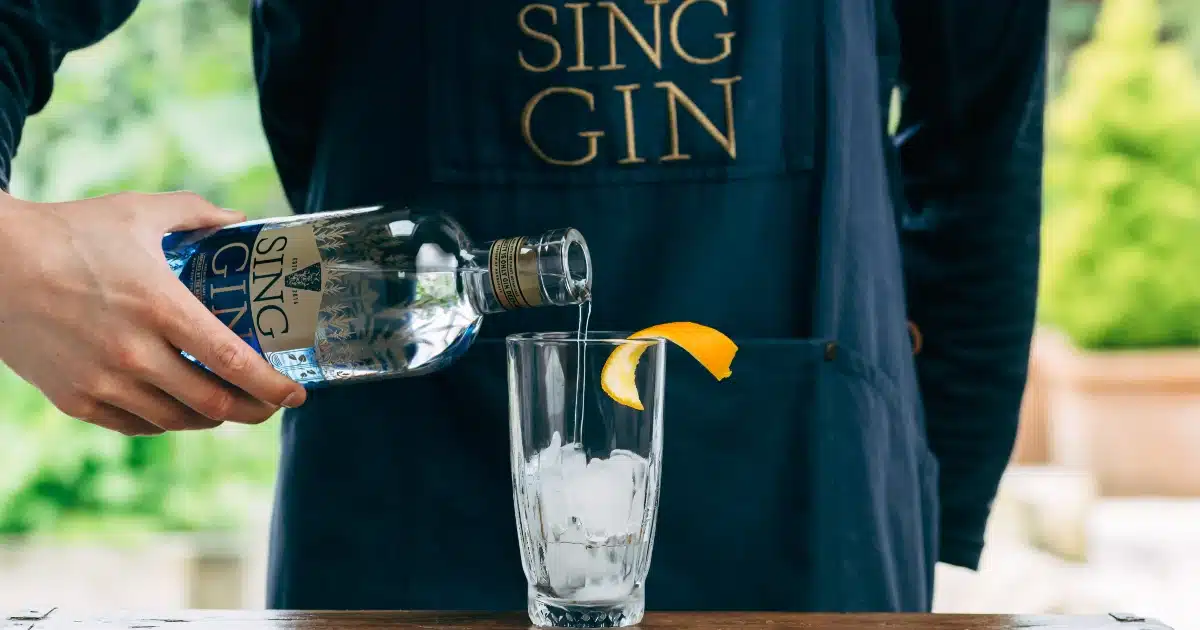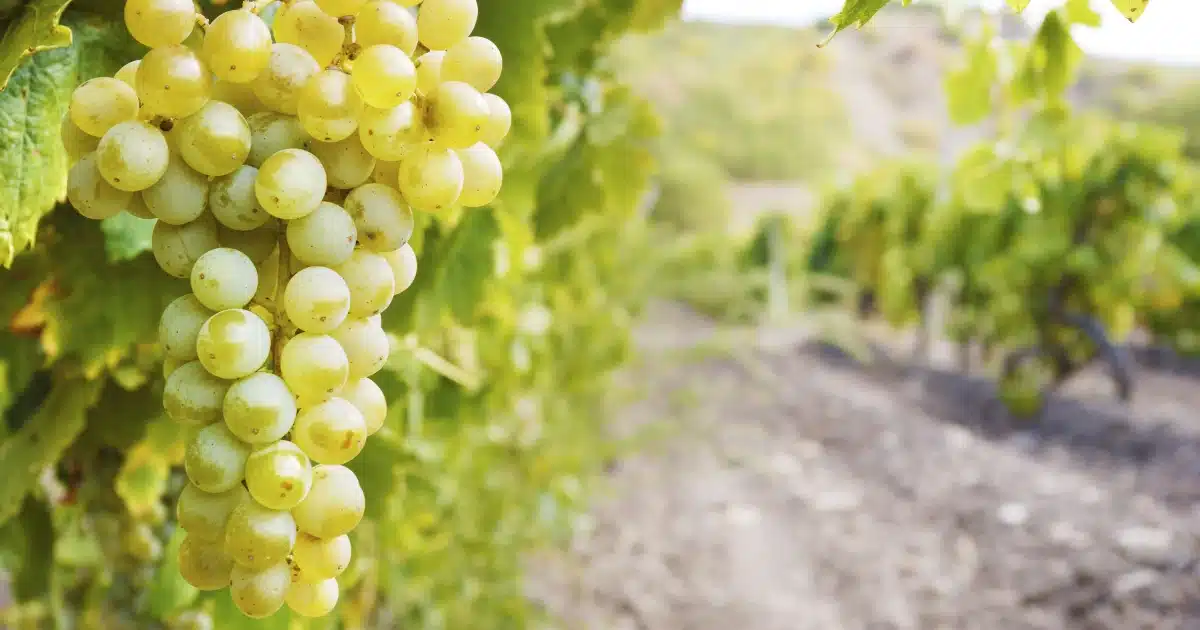VIEW OUR RANGE OF GIN HAMPERS TODAY

One of the many things that makes Sing Gin unique is the fact that it’s a gin made from grapes, not grain.
Why did you decide to craft Sing Gin from grapes? Glad you asked! It’s this very decision that made our journey to becoming a small-batch UK gin brand so special. Did you know Sing Gin is one of the first UK gins made from grapes? In fact, even today we’re still one of only 15 grape based juniper spirits on the planet.
Who doesn’t love a gin hamper? The perfect gifts for drinkers of gin, our hampers rise to any occasion – from birthdays to anniversaries, congratulations to new homes, Christmas or just to say thank you. Discover our range of luxury gin hampers here.
Most gin makers use grain. So why do we craft Sing Gin from the grape? Just to be awkward or to thumb our noses at tradition? Au contraire. Gin made from grapes is actually more traditional than those made from grain!

To better understand the present, we need to understand the past. The very first juniper spirits were made with grape back in the 13th century.
The first evidence of grapes in spirits dates back to a manuscript from 1495 in the Arnhem/Apeldoorn region of the Netherlands. We know very little about the individuals who created this recipe, but we do know the grape spirit was made for recreational use as it was titled ‘Medicinal Tracts’ and located within the kitchen food section, alongside a mass of medicinal recipes.
Fast forward to 1996, when leading expert in distilling and author Professor Eric van Schoonenberghe writes about a recipe titled ‘Om Gebrande Wyn te Maken’ (try pronouncing that after a few Sing Gins!), which was discovered in the Sloane Manuscripts over 400 years ago. Through dialect analysis, Schoonenberghe uncovered a game-changing formula which listed specific ingredients that we now know as botanicals. The ingredients included some our favourites; juniper, ginger, cardamom and seeds of paradise.
Thanks to Professor Van Schoonenberghe’s discovery, we have proof that grapes played a key role in the creation of the first ever juniper spirits!
This suggests that when it comes to ways of making gin, grape is more traditional than grain. However, a book titled ‘A Guide to Distilling’ tells us that by 1582, the typical base for distilled spirits had become grain, not grapes.
So, why this shift from traditional grape-derived gin to grain? An ice-age. Yes, you read that correctly! Some experts speculated that the onset of a ‘little ice age’ in the mid-16th century might have caused the shift. With colder climates making harvesting more difficult, distillers would have been unable to import the amount of wine necessary to create the grape based gin that the world knew and loved. A catastrophe, if you ask us!
Aside from its role in the history of gin, another reason we use grape is for the taste and texture. Grape is more aromatic and flavoursome, and delivers a fruity silky smoothness and a softer mouth-feel than grain. So the real question should probably be: why do some gin makers insist on using grain today?
Records from the 1400s tell us that because of a big wine shortage, gin makers switched to grain and never switched back. Even now, grain is less expensive and easier to work with. That might be the case, but we think it’s worth putting in some extra graft to create an exquisite gin from grapes, don’t you?
Grapes are great, in our opinion. We prefer the flavour that grape spirit imparts to our gin and the way it interacts with our seven beautiful botanicals. Plus, we’re a sucker for classical methods, and like to honour them where we can. So for us, it’s gotta be grape.

Of course, the pursuit of perfection inevitably throws us some challenges. Making gin from grapes means we have to contend and plan carefully for seasonal depletions in stock, high prices and supplier difficulties. Also, botanicals can react a little unpredictably when using grapes as opposed to grain.
Fortunately for you Sing Gins sippers, we know that nothing worth drinking comes easy. Despite the hiccups, we love the grape-based life!
There are over 10,000 varieties of grapes in the world. So, how do we choose which ones to use?
The first gin ever made from neutral grape spirit is crafted from the Ugni Blanc grape, which is grown in the Cognac region of France. Since the marvellous discovery that grapes could be used to make gin, many different varieties have been used including grapes such as the Bacchus, Chardonnay, Niagara, Tempranillo, Bobal and Airen.
Gins made from grapes all carry very different flavour profiles but have one key thing in common: a distinctly soft and smooth texture of the spirit.

Our grape spirit is crafted from a unique blend of two white varieties of grape native to Spain, the Airen and Macabeo. These grapes are harvested from the Ciudad Real region of central Spain. The city famous for its museums, churches and historic cathedrals has a famed history of producing grapes!
The Spanish wine region our grapes are grown in is D.O.P Valdepenas.
We take great care to respect the provenance of these grapes. When they arrive at our Yorkshire distillery, they’re combined with flax grown right here on our turf and other carefully selected botanicals to create a gin that evokes the character of our local landscape.
Neutral spirit made from grape can be labelled in many ways; you might hear it referred to as grape alcohol or vinous alcohol. The categories of grape spirits refer to the different parts of the grape and the ways that the grape is treated during the distillation process.
Here are some of the most common types of neutral grape spirit:
The pomace is used to create grape based spirits like Grappa, Zivania or Grozdova. It’s comprised of the grape skin, pulp, seed and stem that remains after the fruit has been compressed.
Wine lees are the sediments of the dead yeast cells left over from fermentation.
A neutral spirit is produced from the grape residue from wine production. It usually includes both the pomance and the wine lees.
The grape alone can be used as a base, similar to an eau-de-vie.
It’s not just us gin makers who are in on the secret. A number of other spirits are made from grapes, including:
Brandy is a generic term for a distilled fruit spirit. The name comes from the Dutch word ‘brandewijn’ which means ‘burnt wine’. Types of grape brandy include: Aguardiente, Armagnac, Arzente, Brandy De Jerez, Cognac, and Metaxa.
When made from the pomace, Eau-de-vie is called pomace brandy. It’s a higher proof clear spirit made from fruit.
If you’re partial to a Pisco Sour on a night out, you should know all about this Peruvian spirit. Pisco became popular among foreign adventurers in the 18th century when ships would stop in the port city of Pisco to stock up on the local spirit. Pisco is matured in glass or stainless steel rather than oak and bottled at full strength (38 to 48%).
For us, grape is the key to quality, craft and authenticity. Pour yourself a G&T following our guide to the best ever gin and tonic, sit back and relish the superior flavour that comes from making gin from grapes.
Are you following us on Facebook, Twitter, Instagram and Pinterest? You should also subscribe to our newsletter to receive exclusive discounts and updates from Sing Gin HQ.